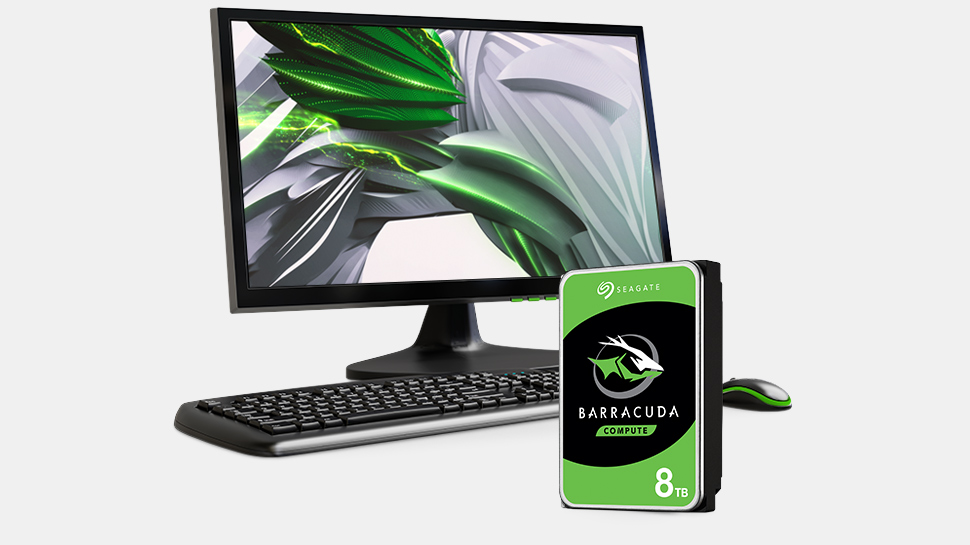Chia Mining Craze Easing, But HDD Pricing Still Rising
HDD pricing is down from May, but still high
The Chia Coin cryptocurrency craze led to an almost immediate shortage of many popular hard drives, and the resulting price hikes were intense. Now Chia appears to be slowing down, which should result in reduced demand for high-capacity HDDs and high-endurance SSDs. We examined how the slowed Chia expansion and improved HDD supply have affected retail HDD pricing, but while some pricing has come down over the last month, it turns out that most drives are still selling far over their MSRP. In some cases, pricing has even increased.
The Chia-driven storage crisis unfolded at breakneck speed. In just about a month, from late April to early June, the space allocated to the Chia network increased from 1 exabyte to 16 exabytes. Since the largest HDD makers sell only 30% to 40% of their products via distributors and retailers, the steep increase in demand immediately caused a shortage, and pricing skyrocketed.
According to our previous observations, by mid-May, high-capacity HDDs were almost impossible to find even though pricing increased anywhere from $100 to $350 per drive.
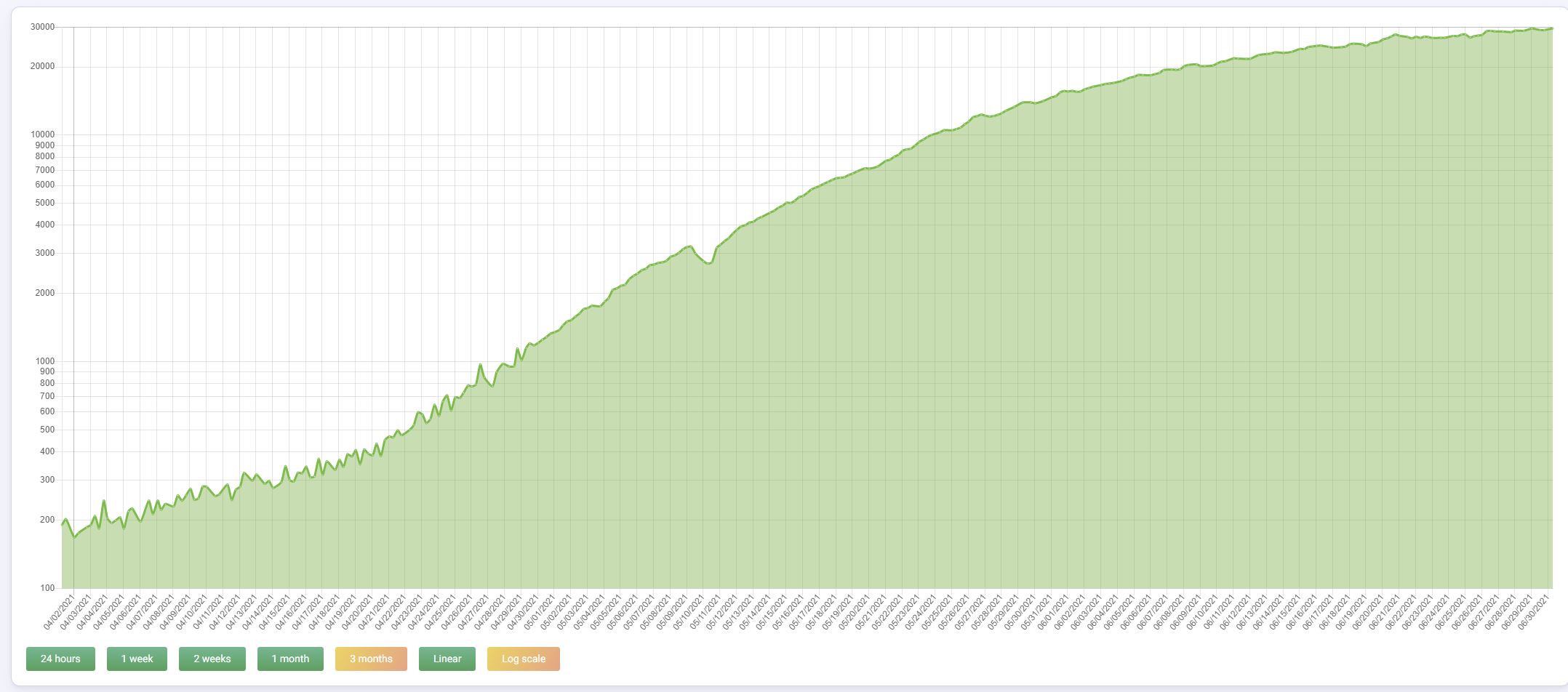
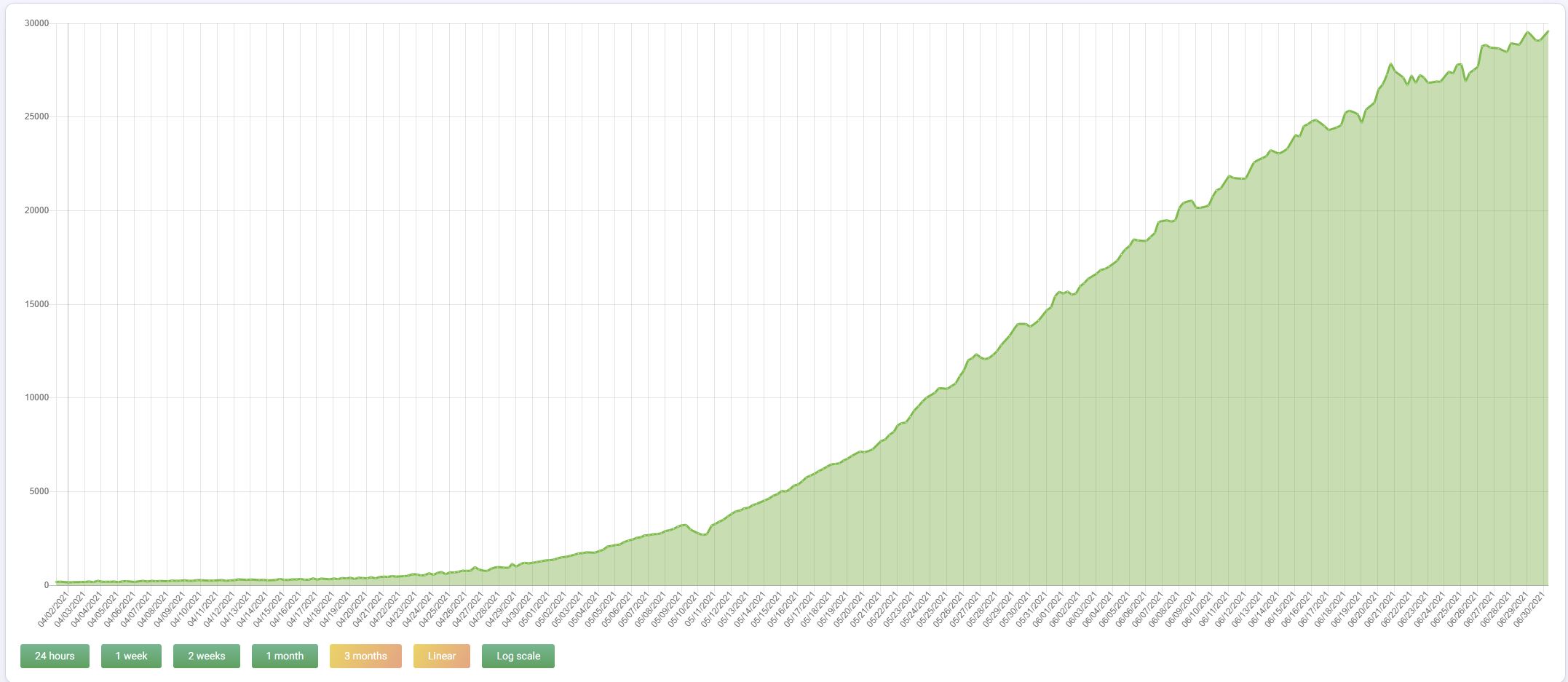
But as you can see in the graphs above that measure the total amount of storage capacity dedicated to the Chia network, now the growth has slowed. It increased from 16.1 exabytes on June 1 to 29.098EB on June 29, which is still significant growth, but the pace of Chia's expansion is clearly decelerating. Let's see how that has impacted HDD pricing.
Desktop HDDs: 10TB, 12TB & 14TB, 7200 RPM, CMR
Premium desktop drives are not very suitable for Chia farming since they are not designed to work in multi-drive environments. However, their typically lower pricing does lend itself well to miners looking to pull the maximum profit, leading to shortages.
10TB
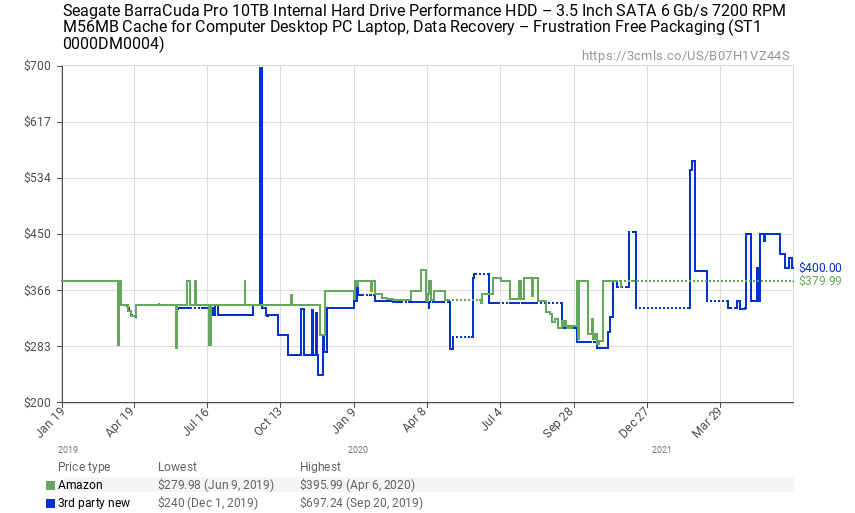
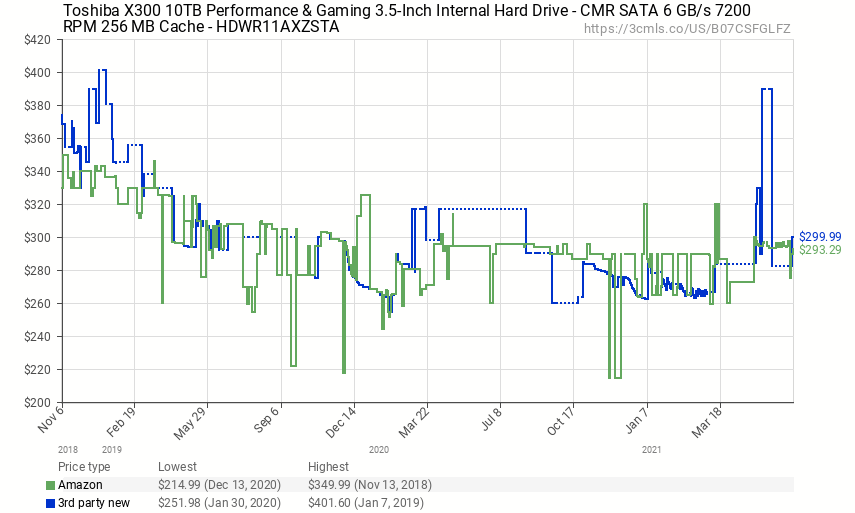
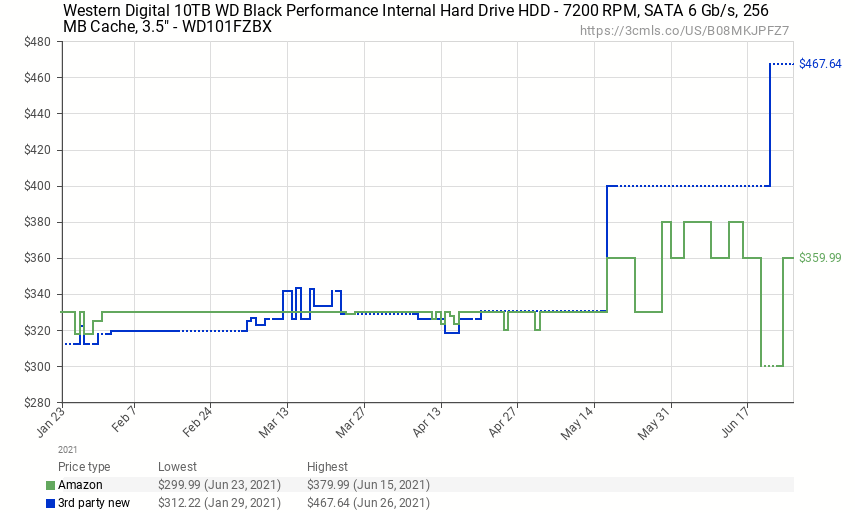
To our great surprise, but pricing for some 10TB desktop HDDs, like Seagate's BarraCuda Pro 10TB and Western Digital's WD_Black 10TB, have actually increased since mid-May, probably because supply diminshed. In contrast, Toshiba's X300 10TB remained at its mid-May pricing.
12TB



The Seagate BarraCuda Pro 12TB seems to have stayed at its price of around $430 (if you can buy it from Amazon). In contrast, Toshiba's X300 12TB HDD is $336 – $398, down from $498 – $506 in mid-May, but up from its price in April.
Western Digital does not produce 12TB desktop HDDs, so we're looking at its enterprise-oriented WD Gold 12TB for this category. This drive was at $340 – $440 at Amazon in May, but now it is at $400 – $580, an apparent hike. Unfortunately, Western Digital did not offer this drive in its own online store at press time, suggesting supply issues.
Overall, the 12TB desktop drives are a mixed bag: Seagate's BarraCuda Pro maintained its price, Toshiba's X300 got cheaper, but Western Digital's WD Gold is actually more expensive than it was in May.
Get Tom's Hardware's best news and in-depth reviews, straight to your inbox.
14TB

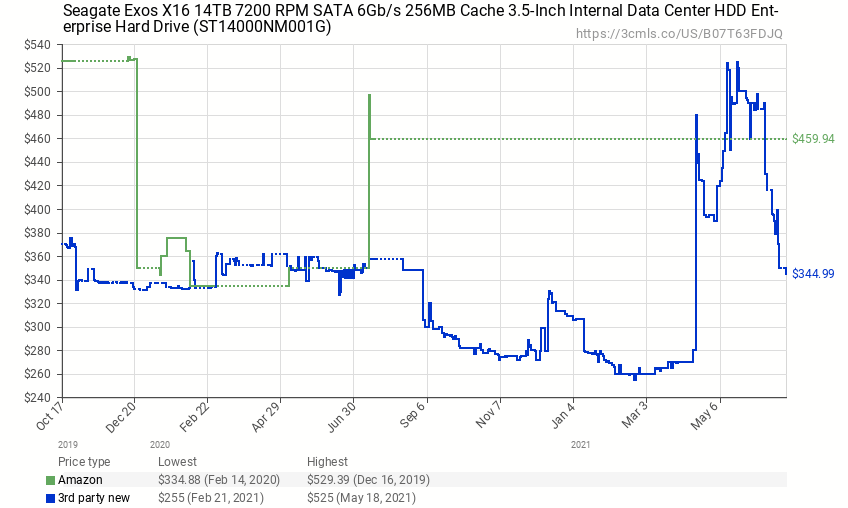
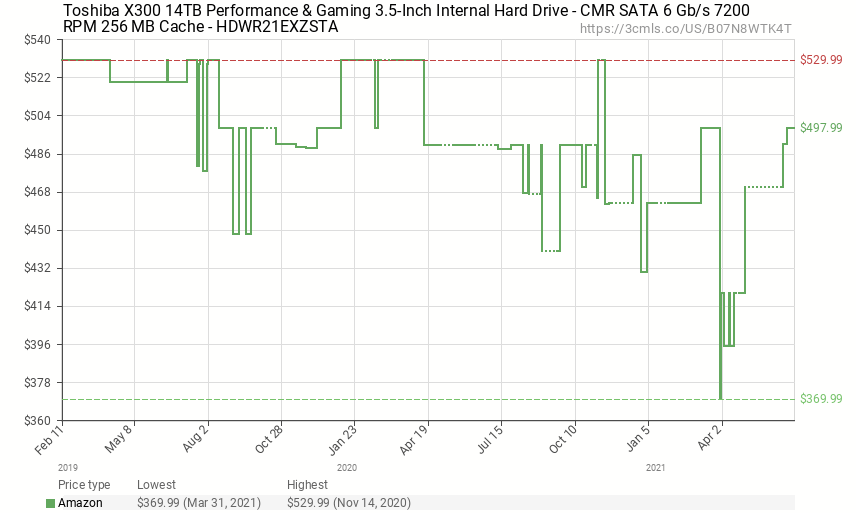
14TB desktop HDDs are hard to find. Western Digital simply does not offer desktop drives of such capacity, which is why we have to consider the WD Gold 14TB in this category. Since Seagate's Barracuda Pro 14TB could not be found at the time of writing, we also had to consider Seagate's Exos X16 14TB drive. Both drives are cheaper than they were in May but are still significantly more expensive than they were in March or April.
Toshiba's X300 14TB is the only 14TB drive that is actually designed for desktops, and not for cloud datacenters. This part has never been exactly affordable at up to $550. Back in May, it was $599 at Amazon's resellers. It sits at $598 as we speak, with no price changes.
NAS: 12TB & 14TB
12TB
Proper NAS drives (7200 RPM, CMR) are way better prepared for Chia mining than desktop HDDs given the fact that they are designed to work in a multi-drive environment.

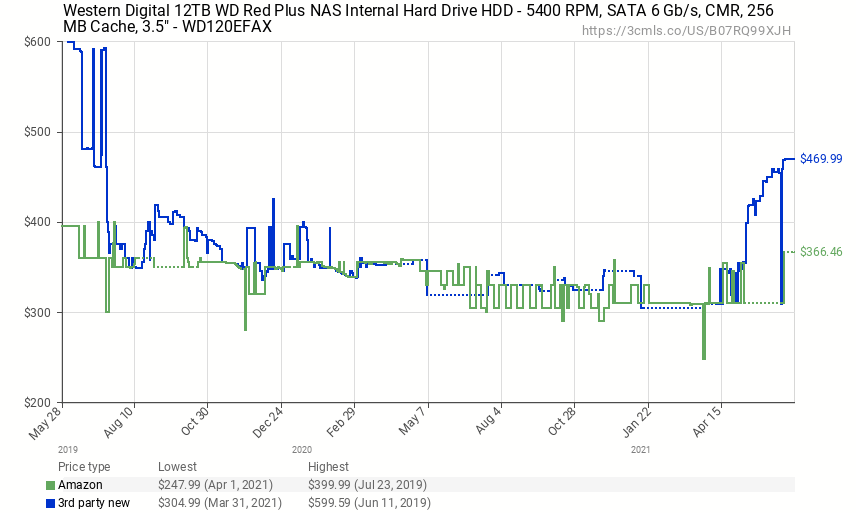
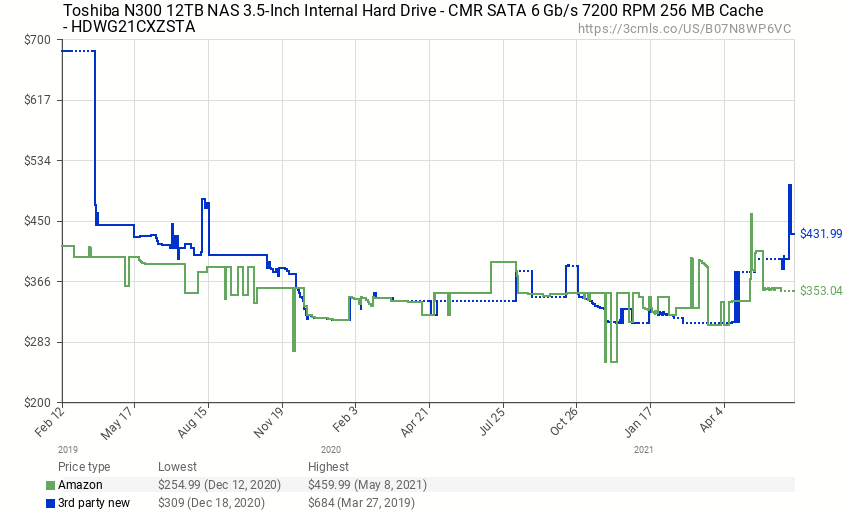
With 12TB NAS HDDs, we again see a mixed bag. Seagate's IronWolf 12TB and Toshiba's N300 12TB are actually more expensive than they were in May. By contrast, Western Digital's WD Red Plus 12TB (we are talking about a CMR 5400-RPM drive here) is actually less expensive than it was.
14TB


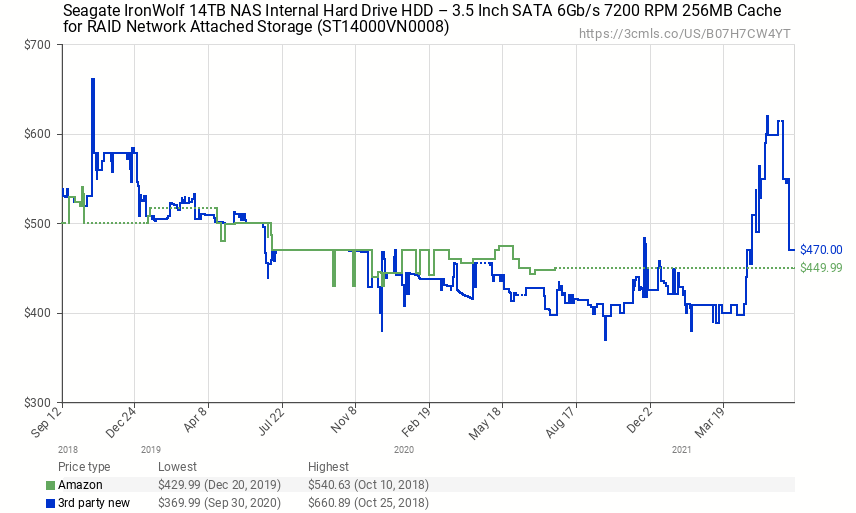
Going up to 14TB reveals that Seagate's IronWolf 14TB can be had for $470 from one of Seagate's partners, which is down from $620 in mid-May, but still a bit higher compared to the pre-Chia frenzy price. Something similar happened to Toshiba's Enterprise Capacity 14TB: it is less expensive than it was in May, but more expensive than it used to be previously.
By contrast, the price of Western Digital's Red Plus 14TB is one of the drives that didn't get any more expensive during the Chia frenzy. Its price has remained at around $460 level for quite some time.
Datacenter/Enterprise HDDs: 16TB & 18TB, 7200 RPM, CMR
Enterprise-oriented HDDs are designed for heavy-duty work. They are very fast (compared to other HDDs) and designed to be very reliable, but they aren't designed to be quiet. These drives are suitable for Chia mining given their capacities, CMR, and ability to work in multi-drive environments.

16TB


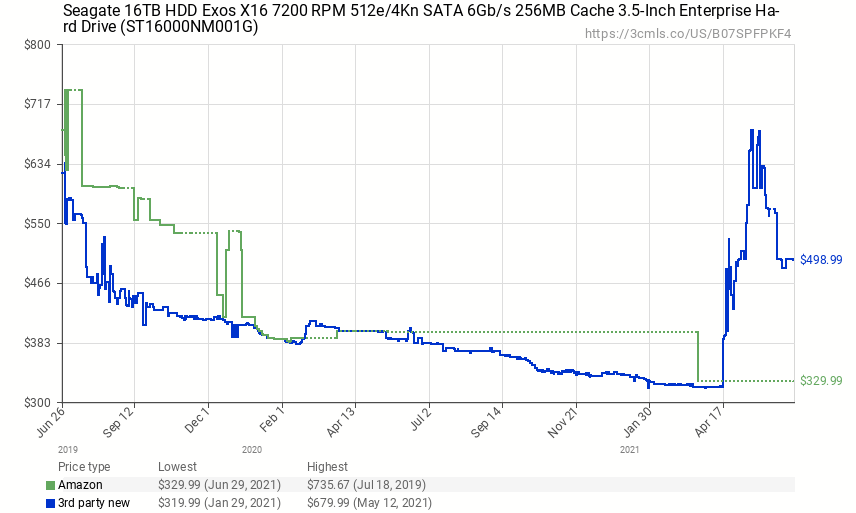
Just like other high-capacity drives, Toshiba's Enterprise Capacity 16TB became significantly more expensive in May due to high demand. Its price has now dropped to $410 (provided that you can get it), which is a tad higher than it was before. We can basically say that the price of this HDD is back to its normal level.
The situation is quite different with Seagate's Exos X16 16TBand Western Digital's WD Gold 16TB. The price of both SKUs skyrocketed in May, and while they are down significantly now, they are still considerably more expensive than they were earlier this year.
18TB
18TB hard drives are range-topping models that are not meant to be cheap. Due to the high demand for advanced HDDs, these drives are selling at prices significantly higher than their MSRPs.
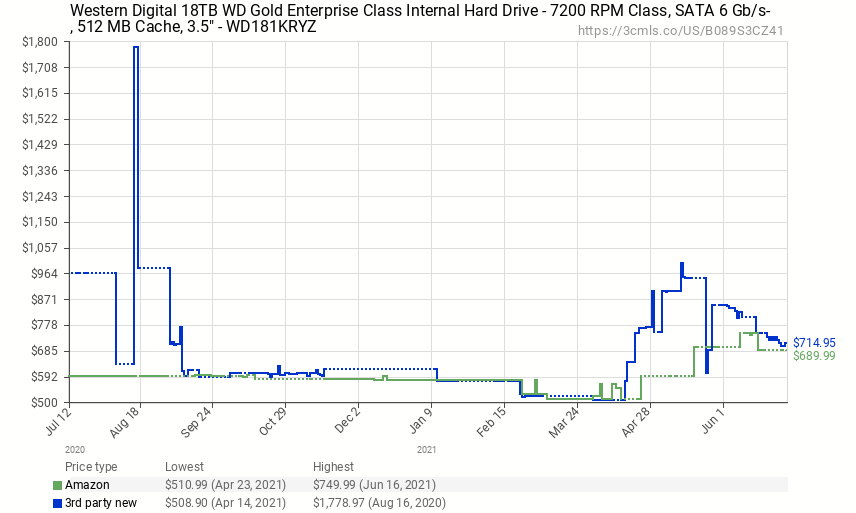

If you are lucky, you can get Seagate's Exos X18 18TB for around $600, or Western Digital's WD Gold 18TB for approximately $700 today. In both cases, the HDDs are significantly cheaper than they were several weeks ago ($1000). In fact, there are still dealers offering 18TB HDDs for $1400. Normally, these drives were around $500 earlier this year.
Summary
While the prices of enterprise-level HDDs have plunged significantly (probably as a result of the Chia craze easing and retail demand receding), they are still not where they were just three months ago. These drives are not designed to be cheap, but at present, they are downright expensive as they are selling for around $200 more than before. The bigger problem is that not all SKUs are readily available.
By contrast, prices of consumer-oriented drives are actually going up because of high demand, or they're staying at levels that most of us would find to be too expensive. Furthermore, there are some high-end SKUs (e.g., Seagate's Barracuda Pro 14TB) that are simply not available, an indicator that companies are prioritizing the production of enterprise-grade HDDs over regular desktop drives.

Anton Shilov is a contributing writer at Tom’s Hardware. Over the past couple of decades, he has covered everything from CPUs and GPUs to supercomputers and from modern process technologies and latest fab tools to high-tech industry trends.
-
mogster Why did you only look at internal drives? External drives like WD's Elements/Easystore can be easily shucked and used internally for Chia storage, or even used as-is once plotting is complete.Reply -
vmem Replymogster said:Why did you only look at internal drives? External drives like WD's Elements/Easystore can be easily shucked and used internally for Chia storage, or even used as-is once plotting is complete.
Great point! I'll first admit that I am one of those WD element shuckers and have been using them to fill my synology unit for years now
That aside, I'll attempt at responding to your point. Harddrives all cause vibration and those vibrations add up if you attempt to mount a bunch of them on a shelf or rack. If you put enough of them together, their vibrations will eventually add up to a harmonic wave shaking the entire rack and dramatically increasing the failure rate of your drives (so a lot of antivibration work will be needed). the failure point for consumer drives is around 5-10 drives, whereas with purpose built internal drives that failure point tend to be a lot higher with built in vibration resistant mechanisms inside of the drives. -
dvnwllms Reply
You'd have a point about "purpose built drives" except for the fact that shucked Element/EasyStore drives are literally WD Red drives meaning they have identical vibration protection. Chia miners have obviously taken to the shuck method because seemingly even more so than normal HDDs the prices have moonshot. Look at shucks.top for reference.vmem said:Great point! I'll first admit that I am one of those WD element shuckers and have been using them to fill my synology unit for years now
That aside, I'll attempt at responding to your point. Harddrives all cause vibration and those vibrations add up if you attempt to mount a bunch of them on a shelf or rack. If you put enough of them together, their vibrations will eventually add up to a harmonic wave shaking the entire rack and dramatically increasing the failure rate of your drives (so a lot of antivibration work will be needed). the failure point for consumer drives is around 5-10 drives, whereas with purpose built internal drives that failure point tend to be a lot higher with built in vibration resistant mechanisms inside of the drives.
